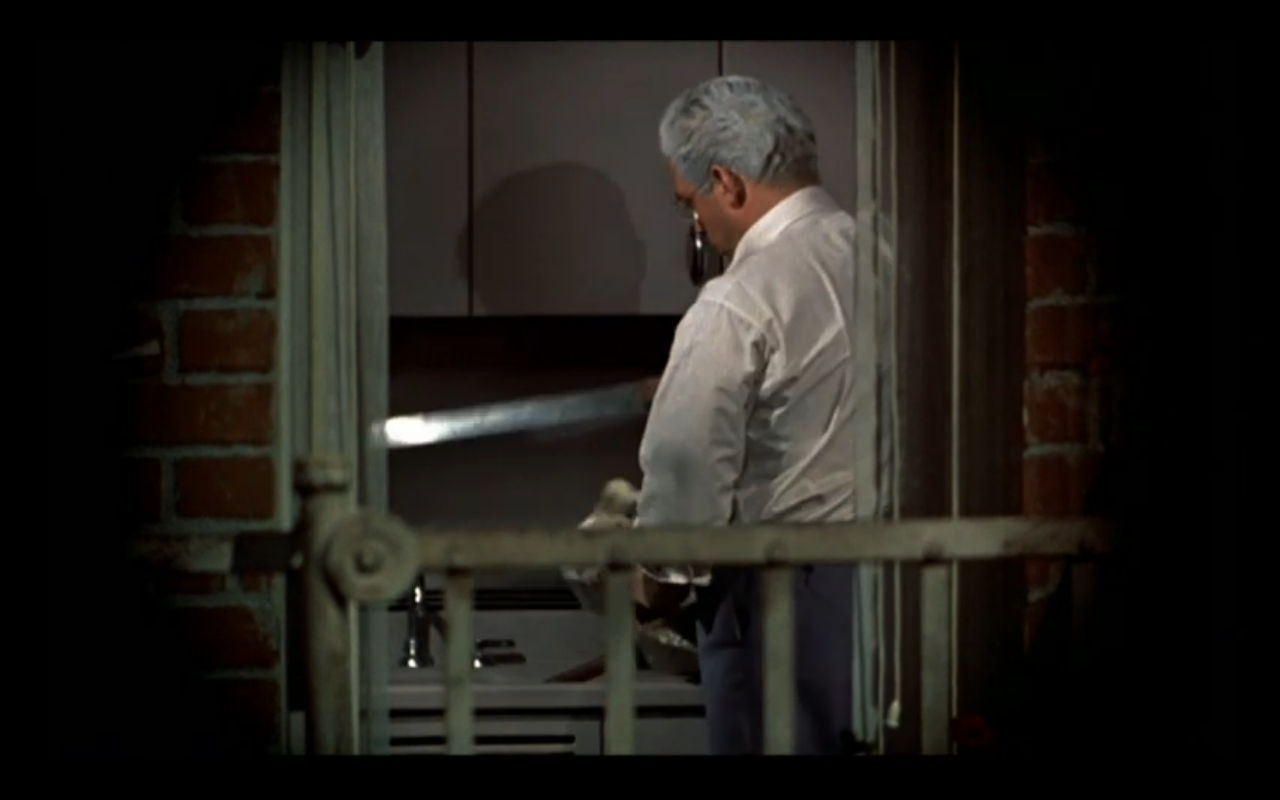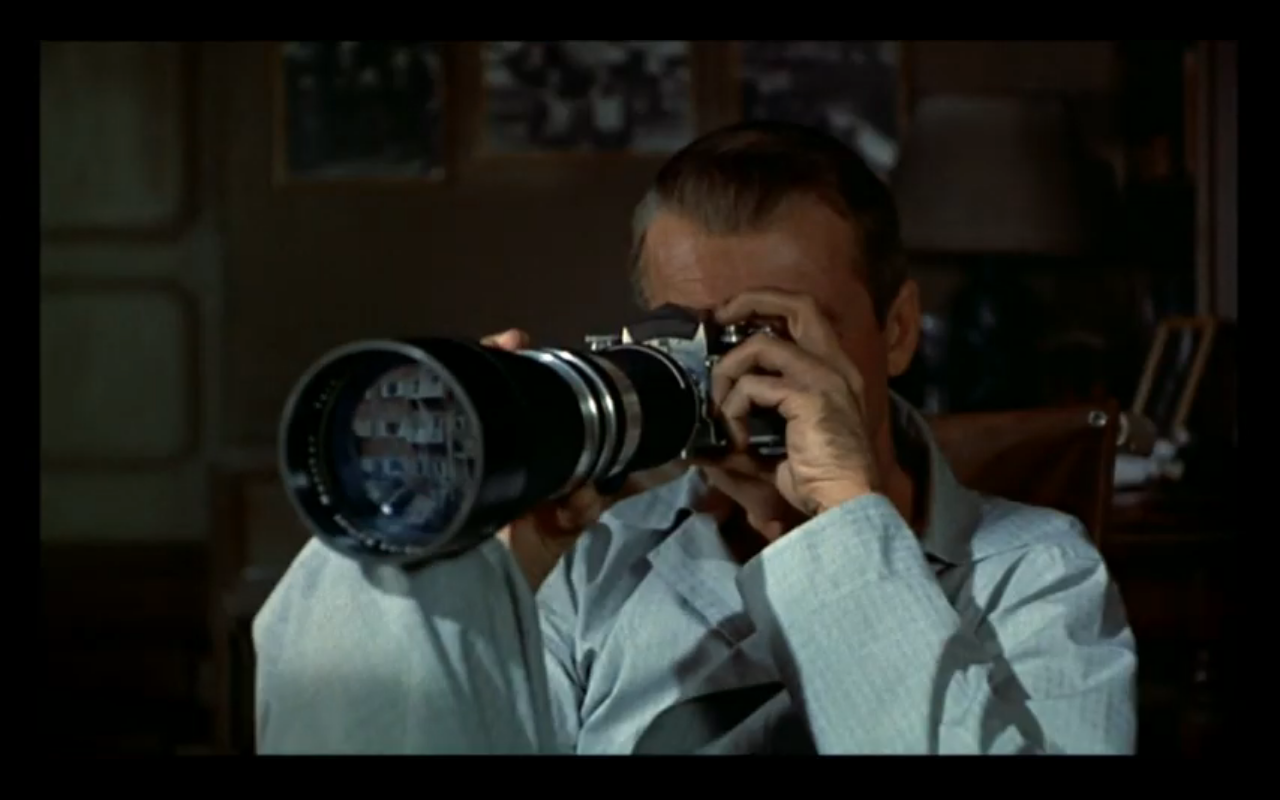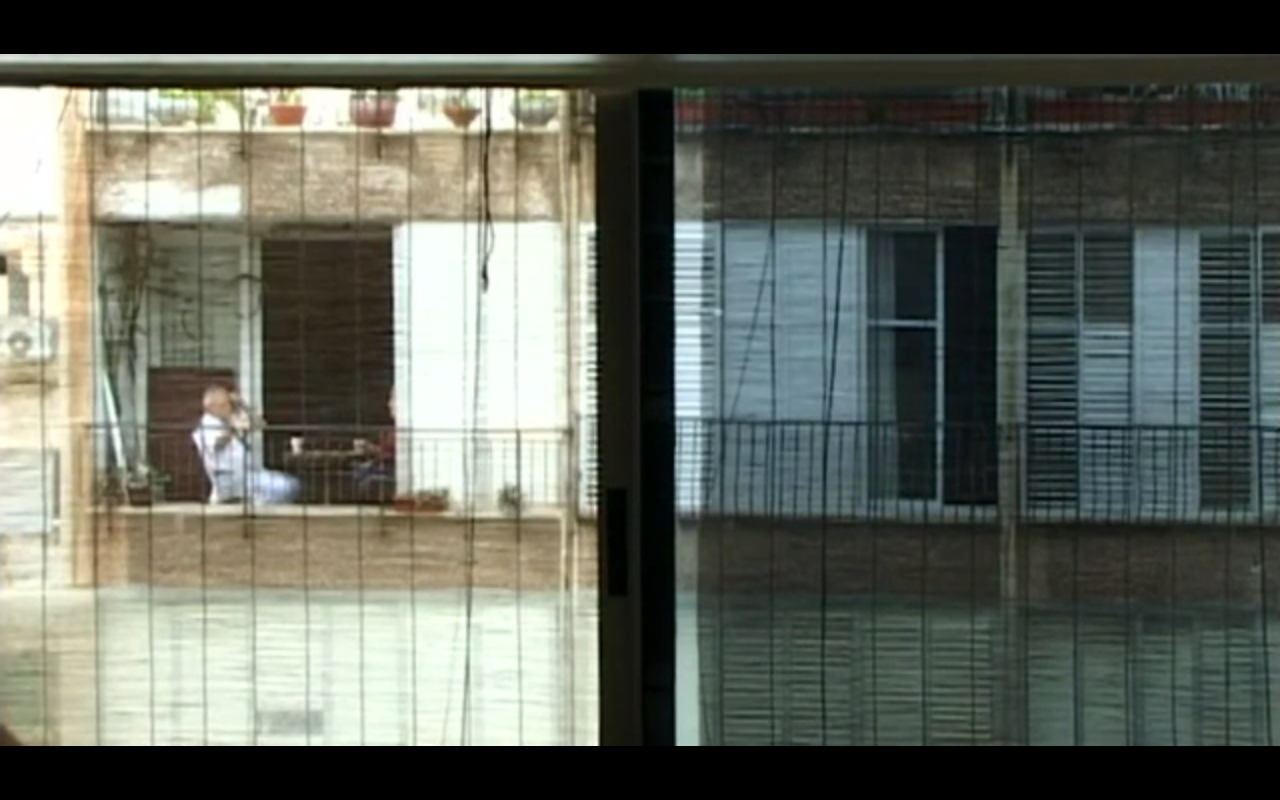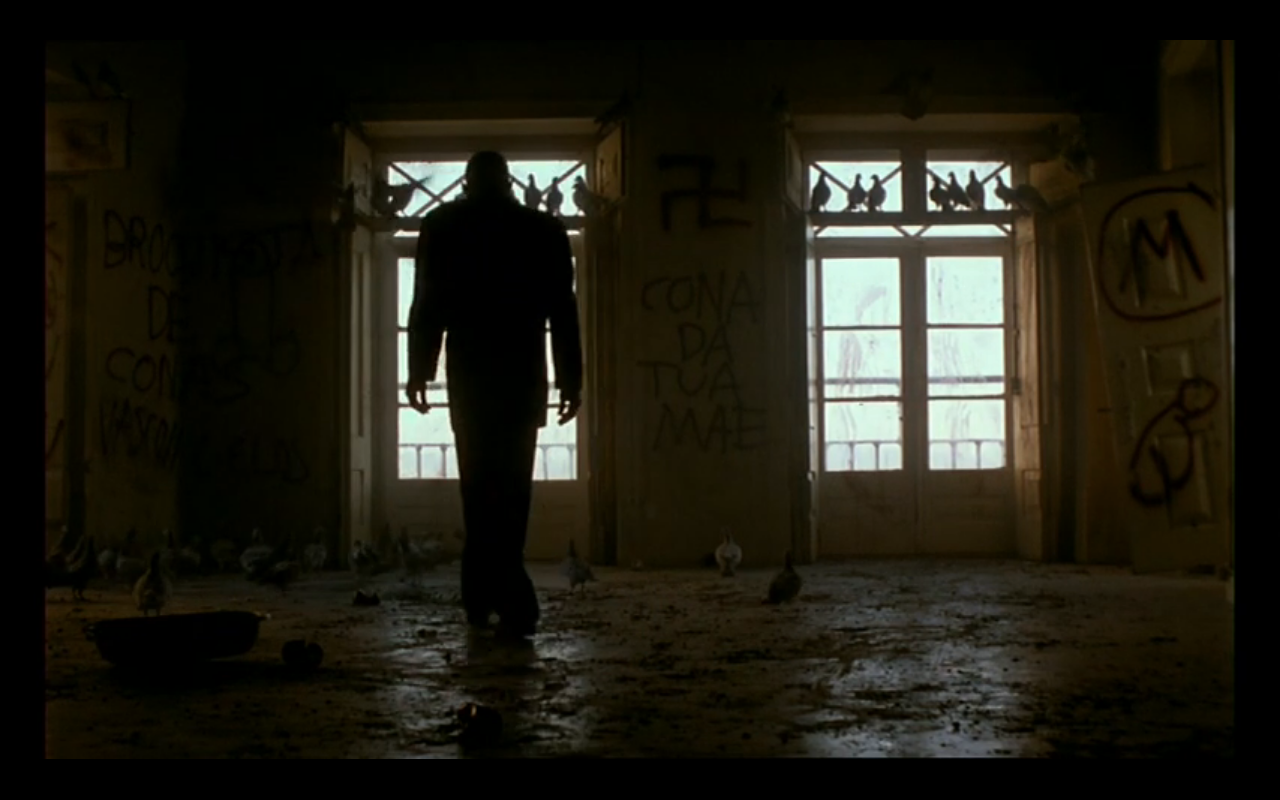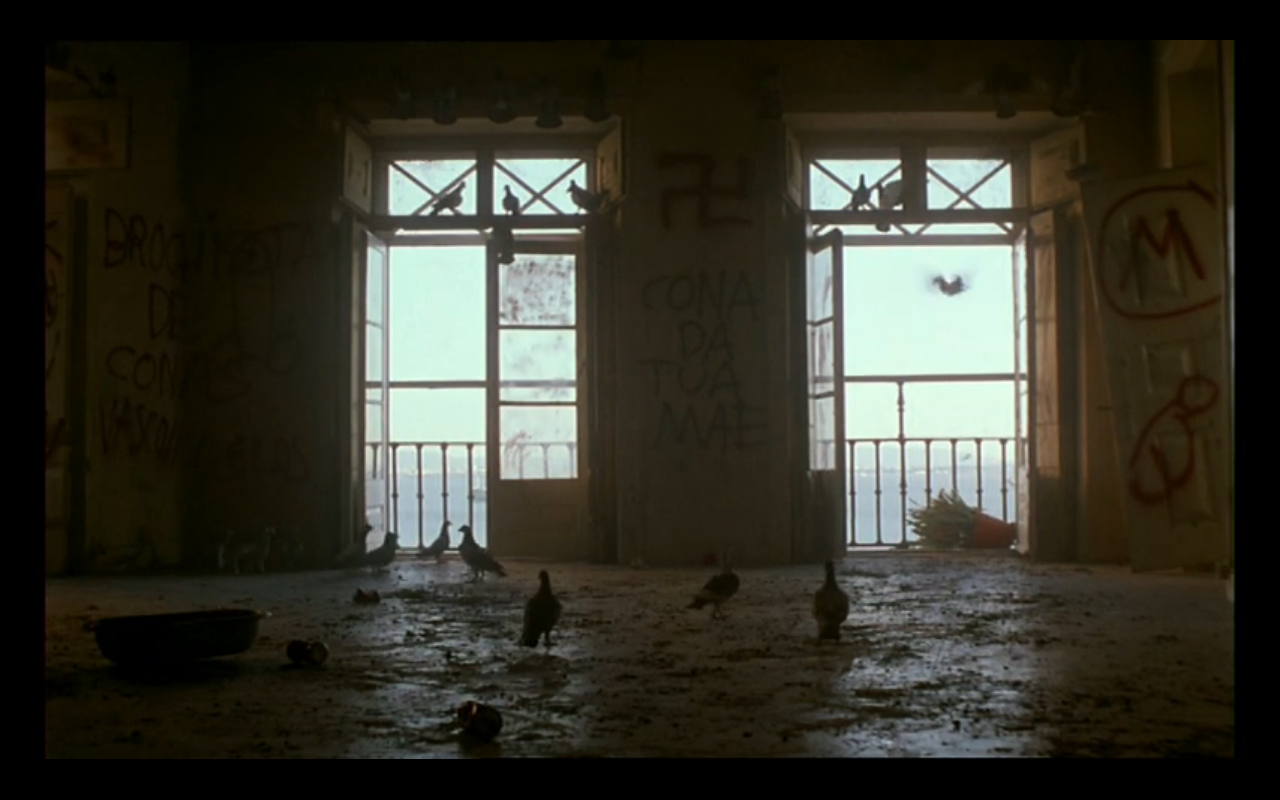Conversa com André, Carolina, Francisca, Laura, Leonor, Madalena, Matilde e Rafael, através do Teams, a propósito de três excertos de filmes com janelas
Conversation with André, Carolina, Francisca, Laura, Leonor, Madalena, Matilde e Rafael, through the Microsoft Teams, about three movie excerpts with windows
Passeio com Johnny Guitar (João César Monteiro)
O ambiente é muito romântico: no início o diálogo parece ser entre o homem a fumar e a mulher que se está a pentear à janela, depois quando ela fecha a janela isso quebra-se e percebe-se que o diálogo não é entre eles, que é um som que está posto por cima. No fim, de manhã, quando a câmara se aproxima da janela e passa a só enquadrar o exterior, o diálogo e a música deixam-se de se ouvir e conseguimos ouvir o som dos pássaros, o som da rua, uma mãe a chamar o filho. Apercebemo-nos então que estamos em Lisboa e que o filme é português.
The atmosphere is very romantic: at the beginning the dialogue seems to be between the man smoking and the woman combing her hair at the window, then when she closes the window it breaks and it is perceived that the dialogue is not between them, that it is a sound that is put on top. At the end, in the morning, when the camera approaches the window and starts to only frame the outside, the dialogue and the music stop being heard and we can hear the sound of the birds, the sound of the street, a mother calling her son. We then realized that we are in Lisbon and that the film is Portuguese.
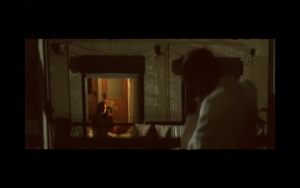
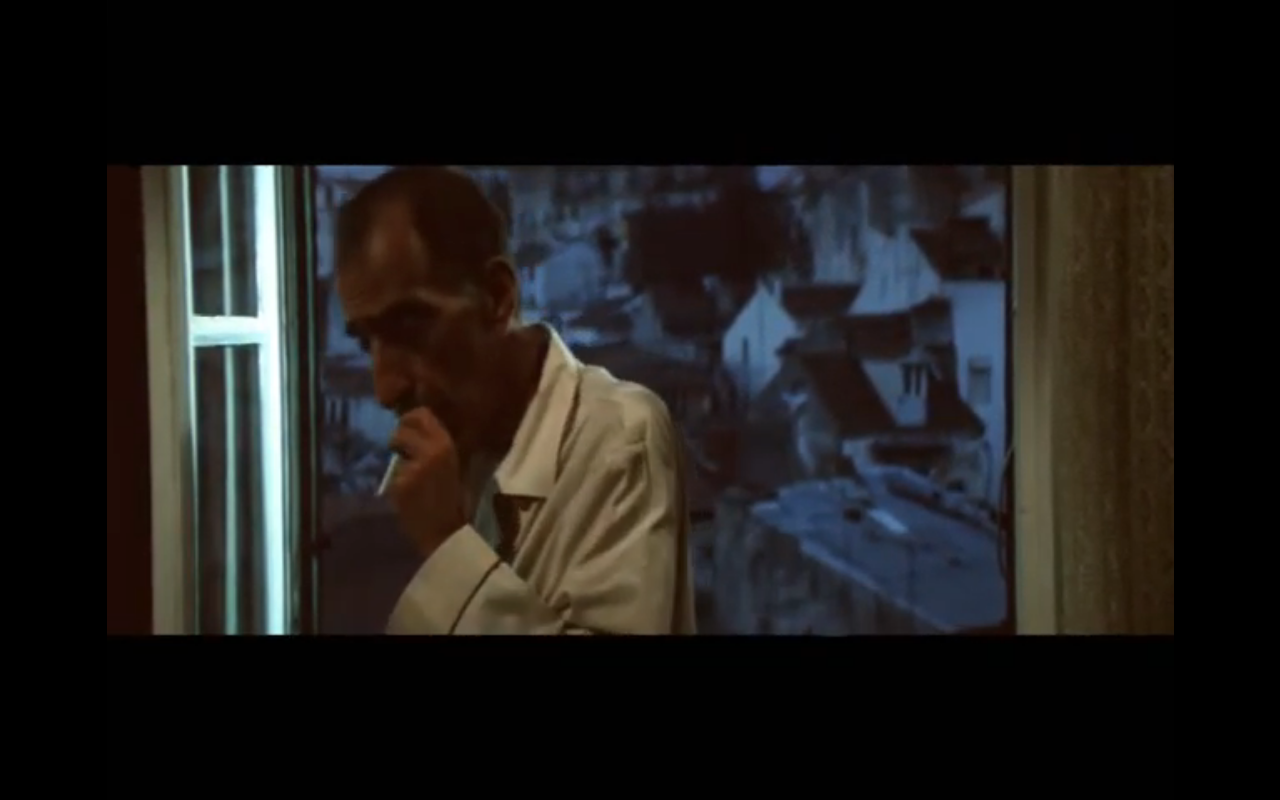
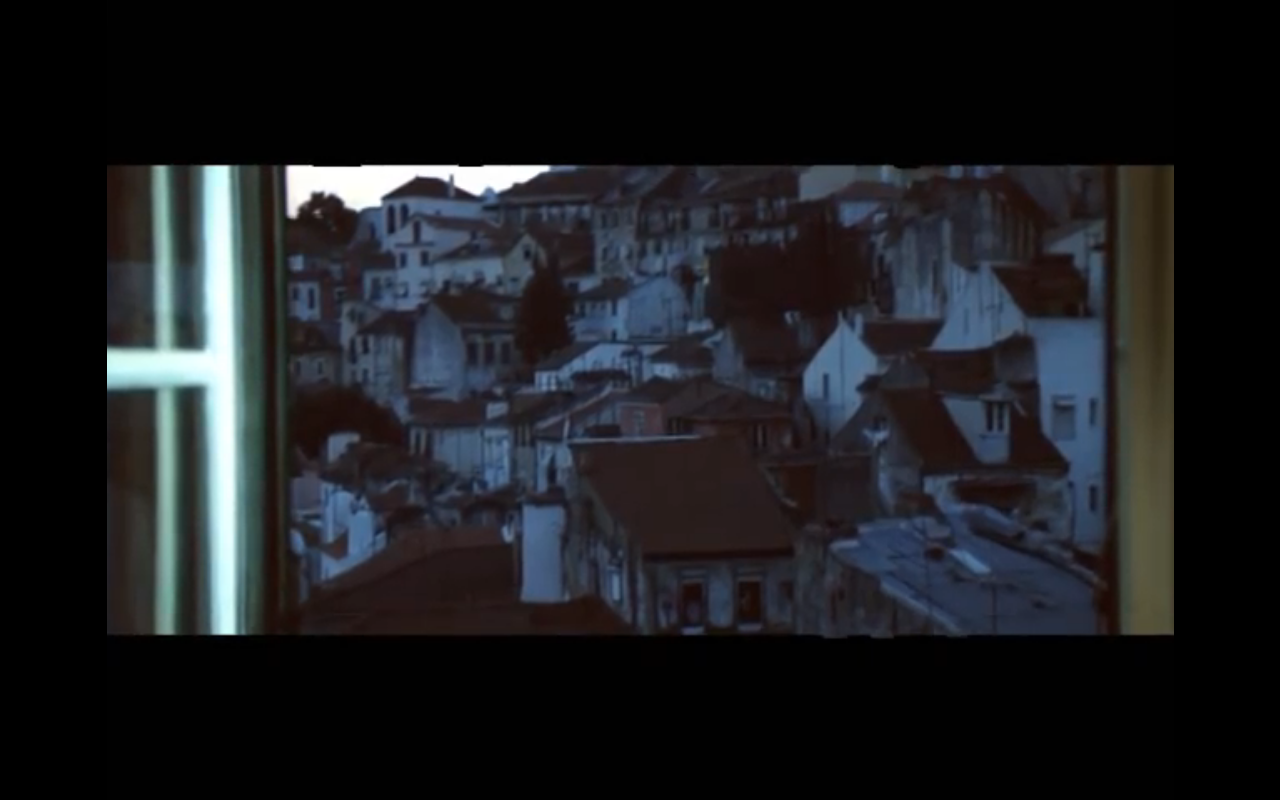
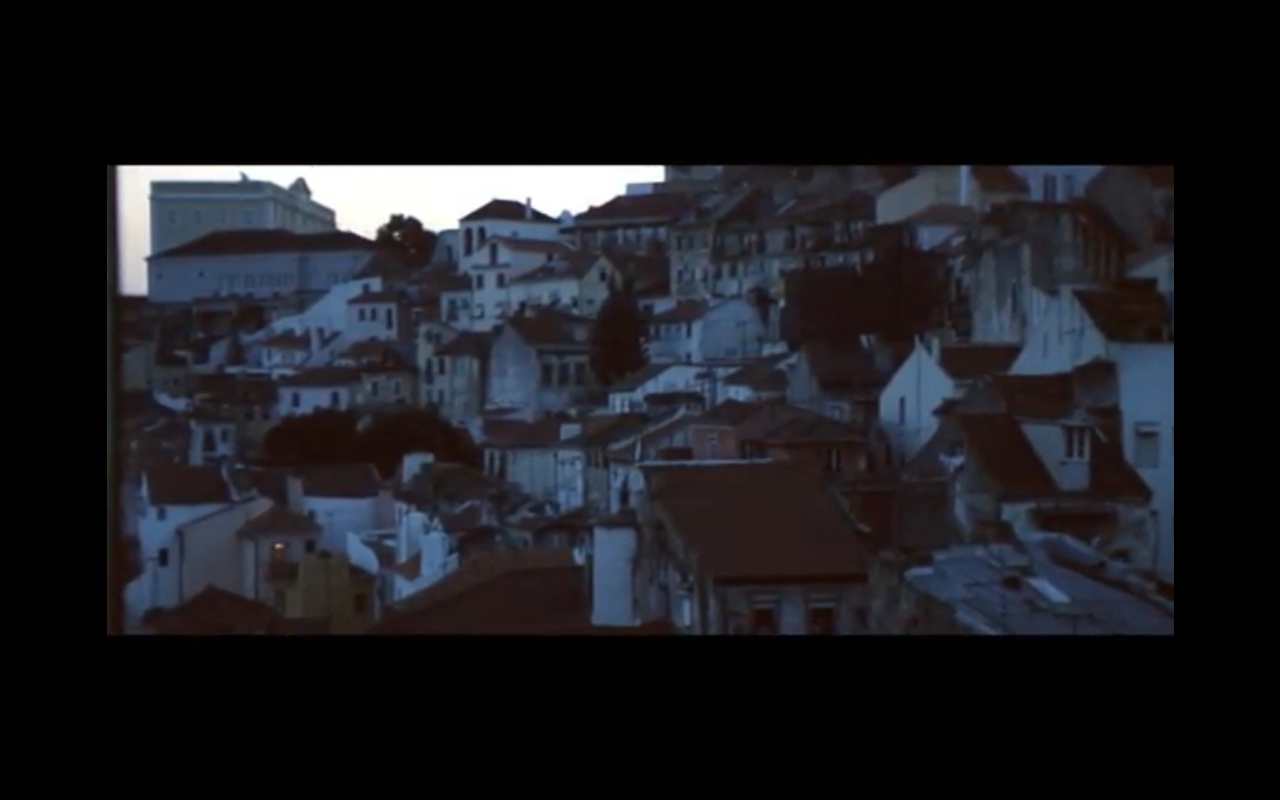
__
Visitas ou Memórias e Confissões (Manoel de Oliveira).
A luz é linda. Parecia uma descrição do que estávamos a ver feita por alguém que estava de fora, que estava a falar em cima do que estávamos a ver. E está a descrever um lugar que conhece, que lhe é familiar. O modo como a cena é filmada – ele vai a andar e a filmar 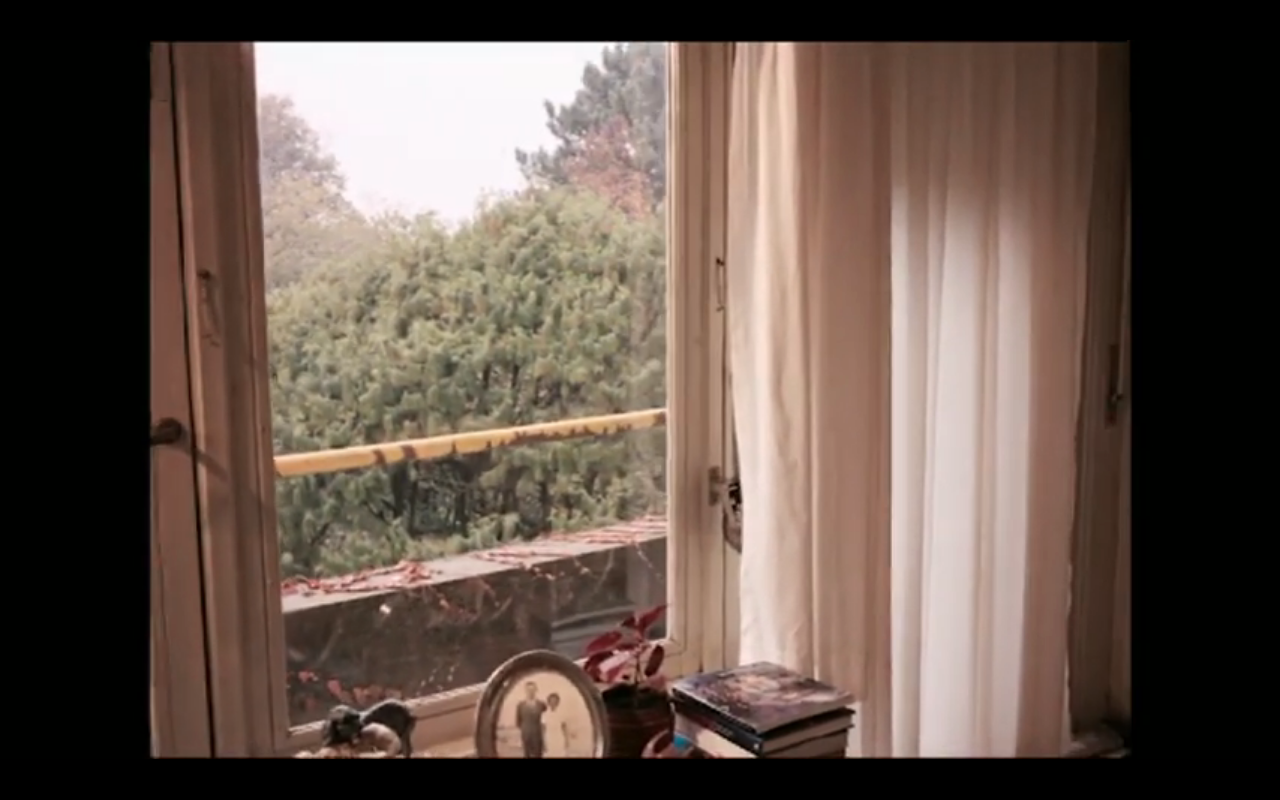 – reforça essa sensação. Há um momento em que ele diz que “a casa é um navio” e nós vemos as janelas redondas e percebemos mesmo o que ele está a dizer. Esta ideia do navio é muito interessante, porque quando pensamos numa casa pensamos numa coisa imóvel, mas a verdade é que se pensarmos bem dentro de uma casa nós navegamos: navegam os nossos sentimentos, as nossas relações familiares, o nosso quotidiano, fazemos a viagem do nosso crescimento.
– reforça essa sensação. Há um momento em que ele diz que “a casa é um navio” e nós vemos as janelas redondas e percebemos mesmo o que ele está a dizer. Esta ideia do navio é muito interessante, porque quando pensamos numa casa pensamos numa coisa imóvel, mas a verdade é que se pensarmos bem dentro de uma casa nós navegamos: navegam os nossos sentimentos, as nossas relações familiares, o nosso quotidiano, fazemos a viagem do nosso crescimento.
The light is beautiful. It looked like a description of what we were seeing made by someone who was outside, who was talking about what we were seeing. And he’s describing a place that he knows, that he’s familiar with. The way the scene is filmed – he’s walking and 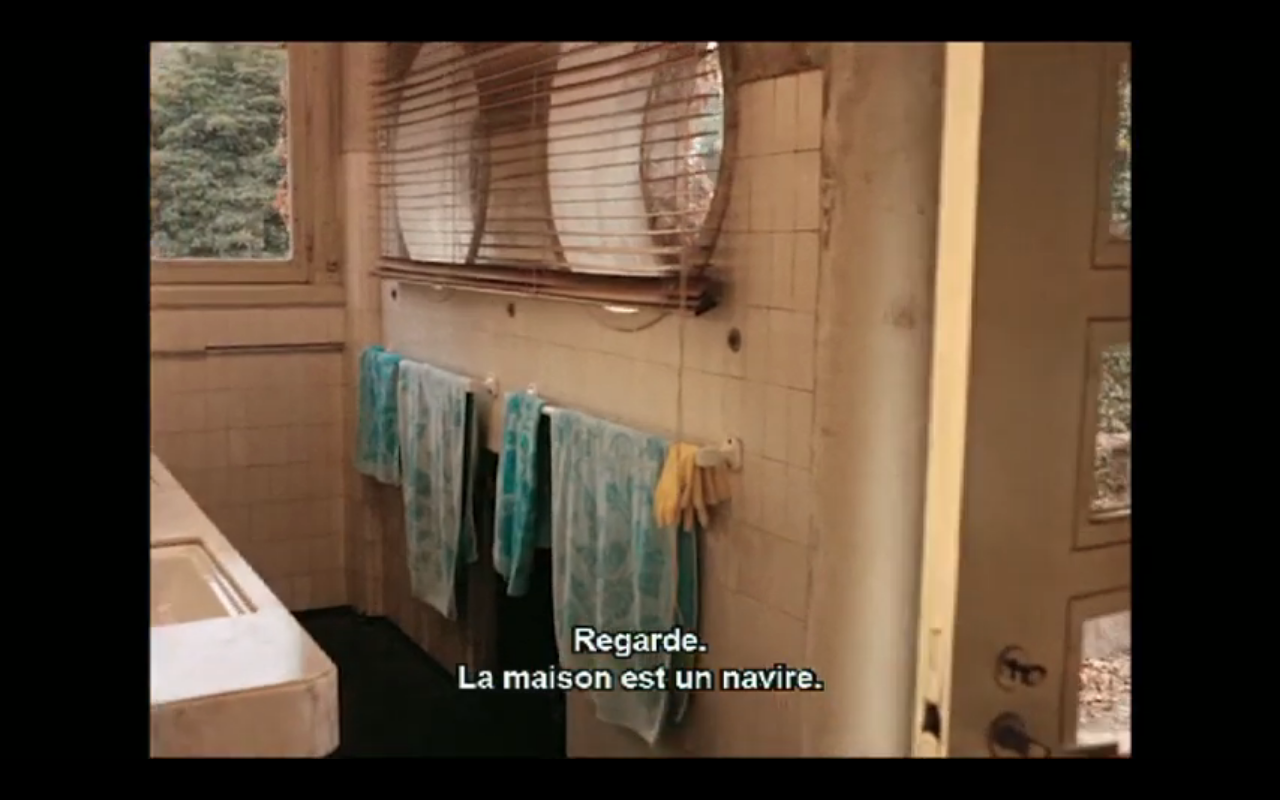 filming – reinforces that feeling. There’s a moment when he says « the house is a ship » and we see the round windows and we really understand what he’s saying. This idea of the ship is very interesting, because when we think of a house we think of something immobile, but the truth is that if we think well inside a house we sail: our feelings sail, our family relations, our daily lives, we make the journey of our growth.
filming – reinforces that feeling. There’s a moment when he says « the house is a ship » and we see the round windows and we really understand what he’s saying. This idea of the ship is very interesting, because when we think of a house we think of something immobile, but the truth is that if we think well inside a house we sail: our feelings sail, our family relations, our daily lives, we make the journey of our growth.
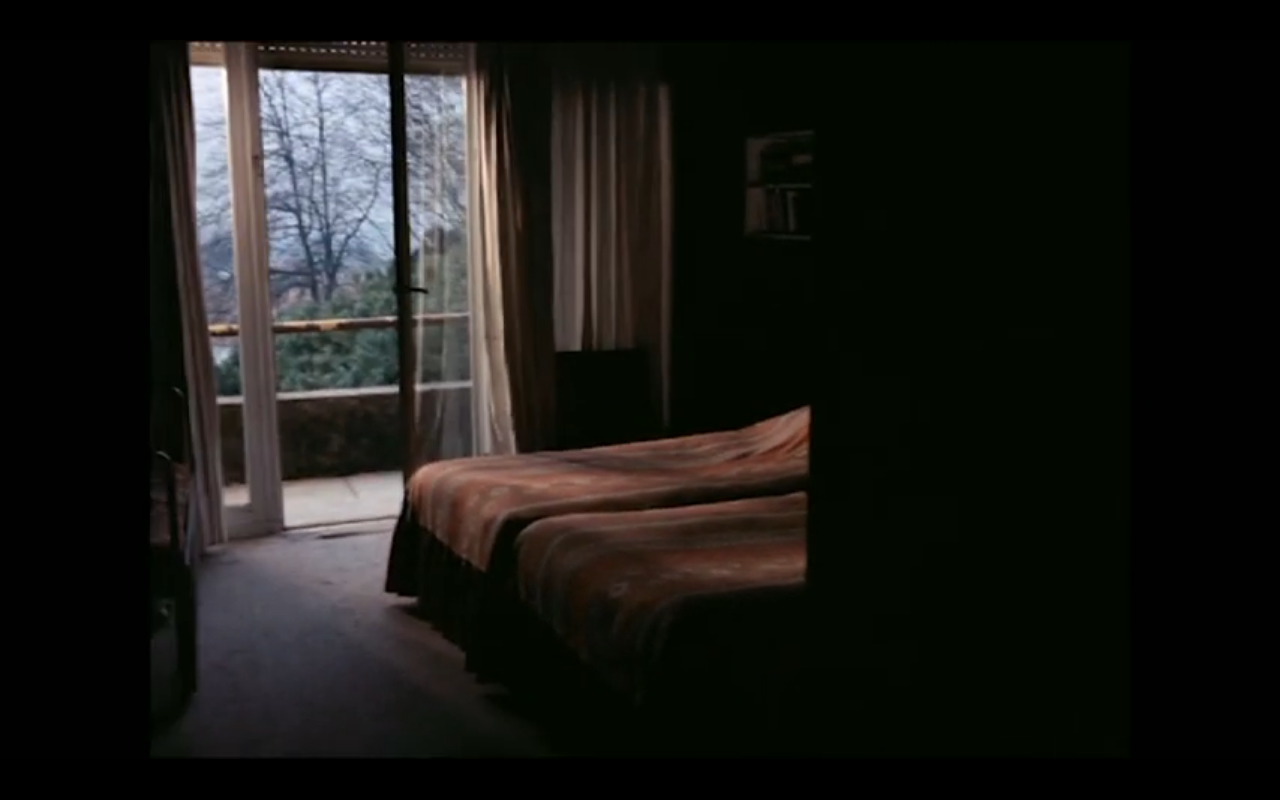
__
How Green Was My Valley (John Ford)
A comunicação não verbal entre a mãe e o filho, que falam com batidas da bengala, é muito interessante, dá muita intensidade. Vê-se a alegria nos olhos da mãe porque sabe que o filho vai responder. Transmitiu-me muita felicidade. A circunstância pode não ser muito alegre – eles estão de cama, doentes – mas o momento é muito feliz.
Da janela vê-se o tempo a passar: primeiro a janela está fechada e vê-se a neve lá fora, depois a janela está aberta e entram uns passarinhos.
A mim pareceu-me que é uma maneira de contar que a mãe morreu – no inverno via-se que a mãe estava sem forças – e acho que os pássaros são uma reencarnação da mãe, o seu chilrear é como a voz dela, e ela vem falar com o filho.
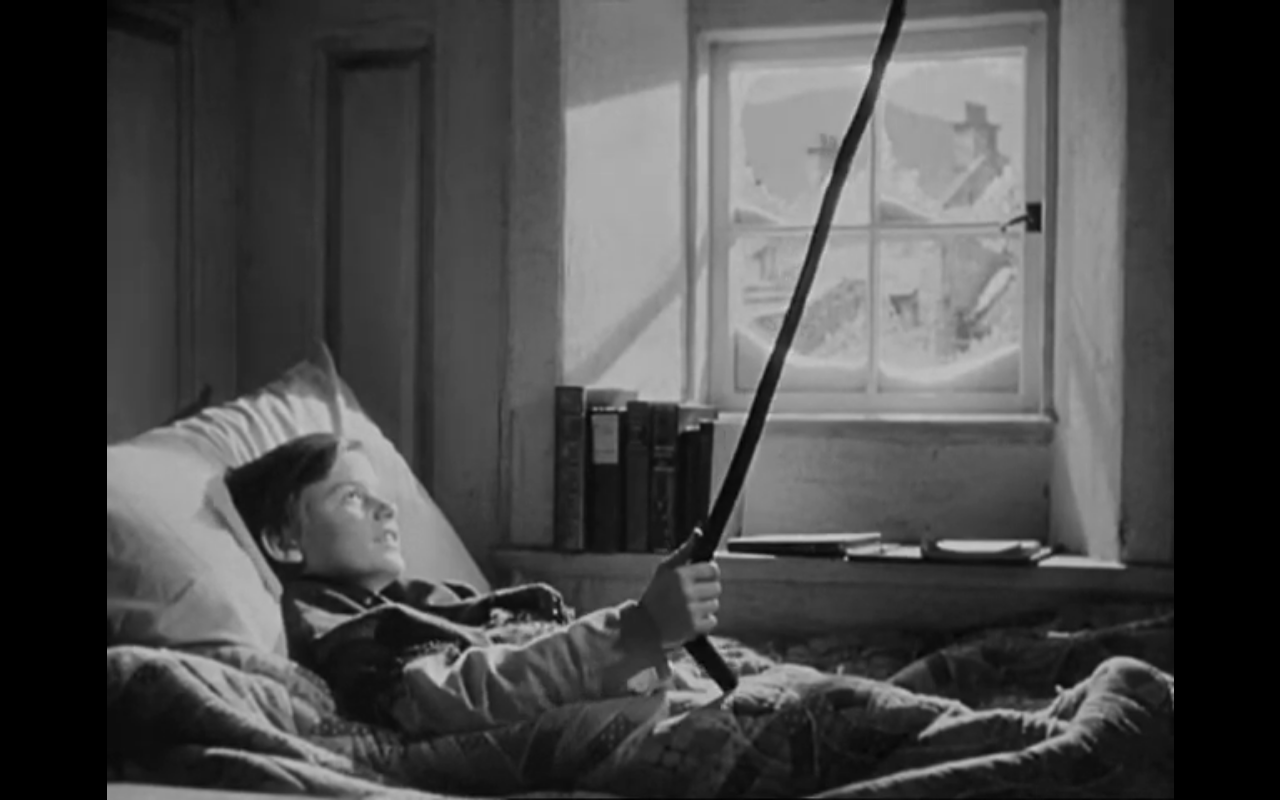
The non-verbal communication between the mother and the son, who speak with the beat of the cane, is very interesting, gives a lot of intensity. You can see the joy in the mother’s eyes because she knows that her son will answer. She gave me a lot of happiness. The circumstance may not be very joyful – they are bedridden, sick – but the moment is very happy.
From the window you can see the time passing: first the window is closed and you can see the snow outside, then the window is open and some birds enter.
It seemed to me that it’s a way of telling that the mother died – in winter you could see that the mother was powerless – and I think the birds are a reincarnation of the mother, her chirping is like her voice, and she comes to talk to the son.
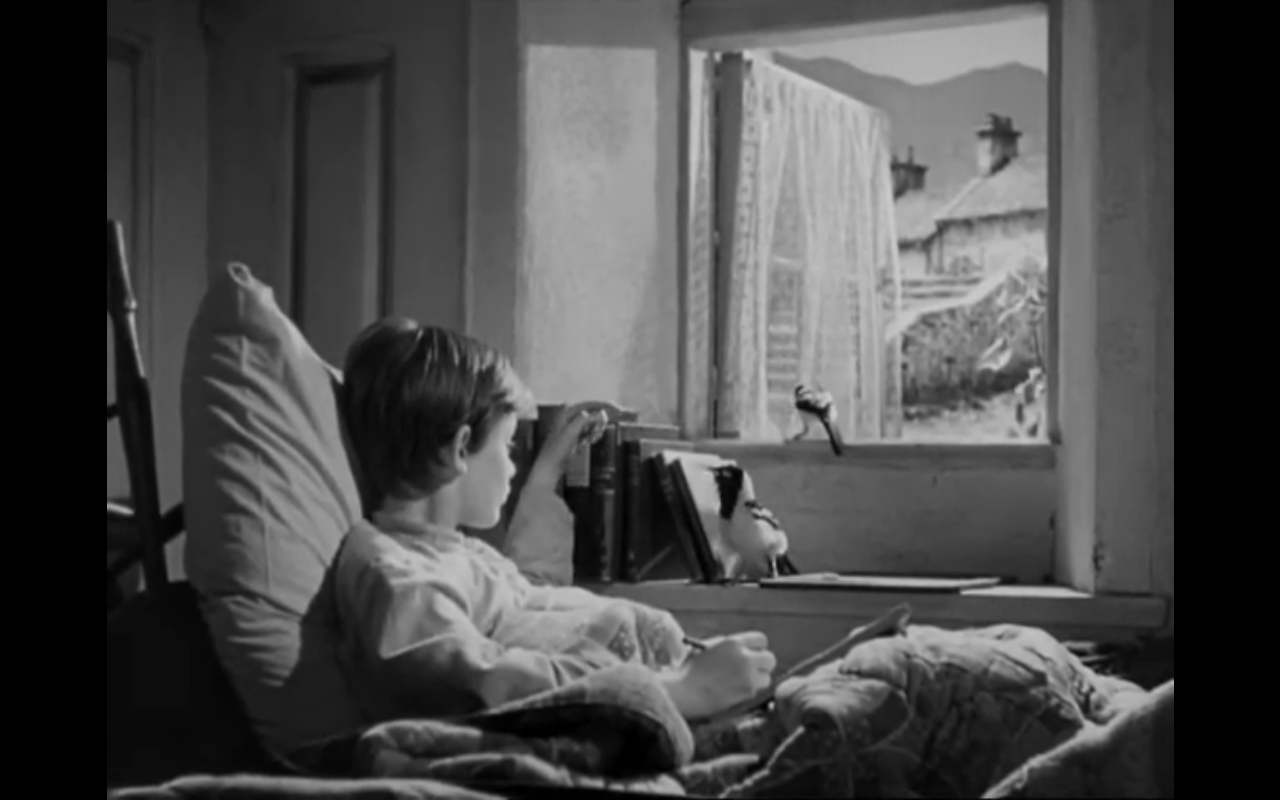
__
The Gohst and Mrs.Muir (Joseph Mankiewicz)
O escuro é lindo. Aquele momento em que o fantasma fala pela primeira vez e a câmara se aproxima da cara dela e vemos a sua expressão!
A janela cria o ambiente, é a luz que entra pela janela que ilumina a cena, e a tempestade lá fora, o som do vento, da chuva, aumenta a carga dramática. No início pode parecer que é a tempestade que está sempre a apagar a chama da vela, mas não. A Mrs.Muir assusta-se duas vezes: a primeira quando a janela se abre (e ela fecha-a) e a segunda quando ouve a voz do homem (que ela convocou a falar). A tempestade é uma coisa da ordem natural, o homem de ordem sobrenatural.
The dark is beautiful. That moment when the ghost speaks for the first time and the camera approaches her face and we see her expression!
The window creates the environment, it is the light that enters through the window that illuminates the scene, and the storm outside, the sound of the wind, the rain, increases the dramatic load. At first it may seem like the storm is always putting out the candle flame, but no. Muir is frightened twice: the first when the window opens (and she closes it) and the second when she hears the man’s voice (which she summoned to speak). The storm is a thing of the natural order, man of supernatural order.
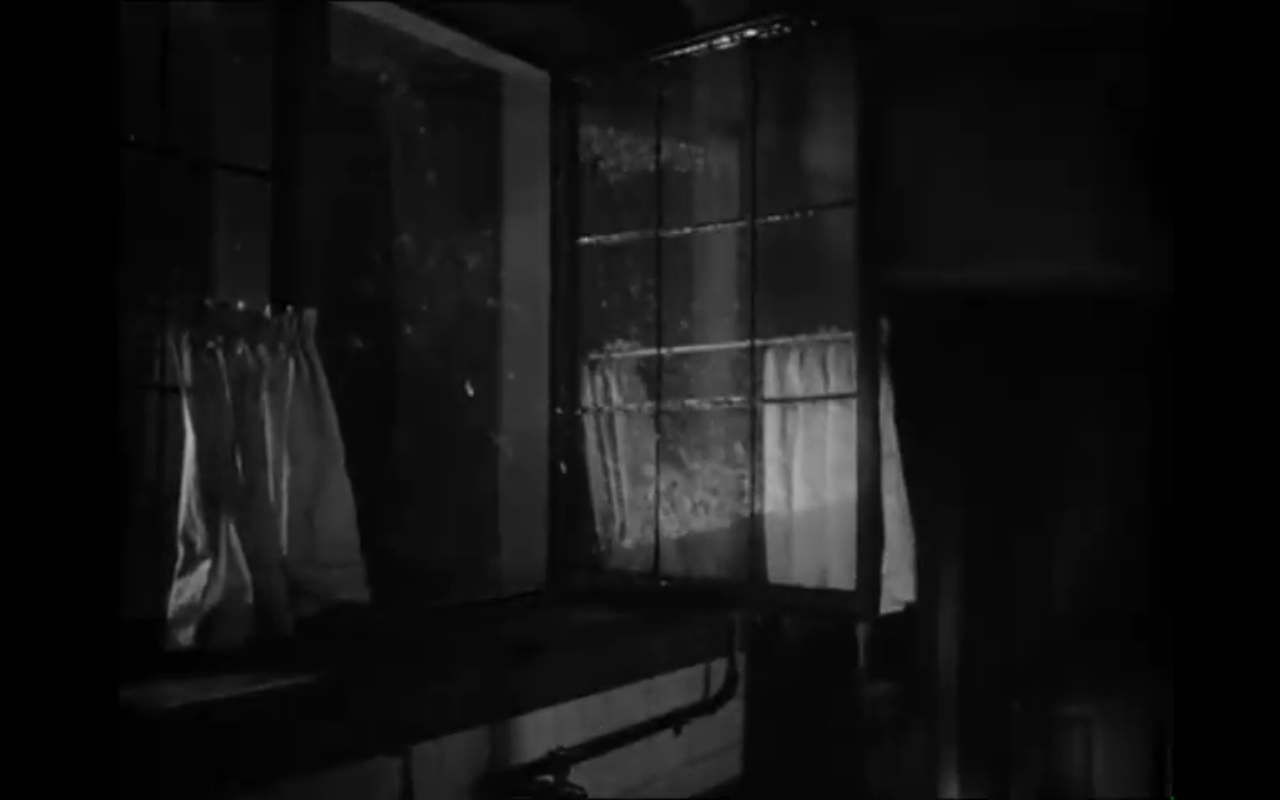


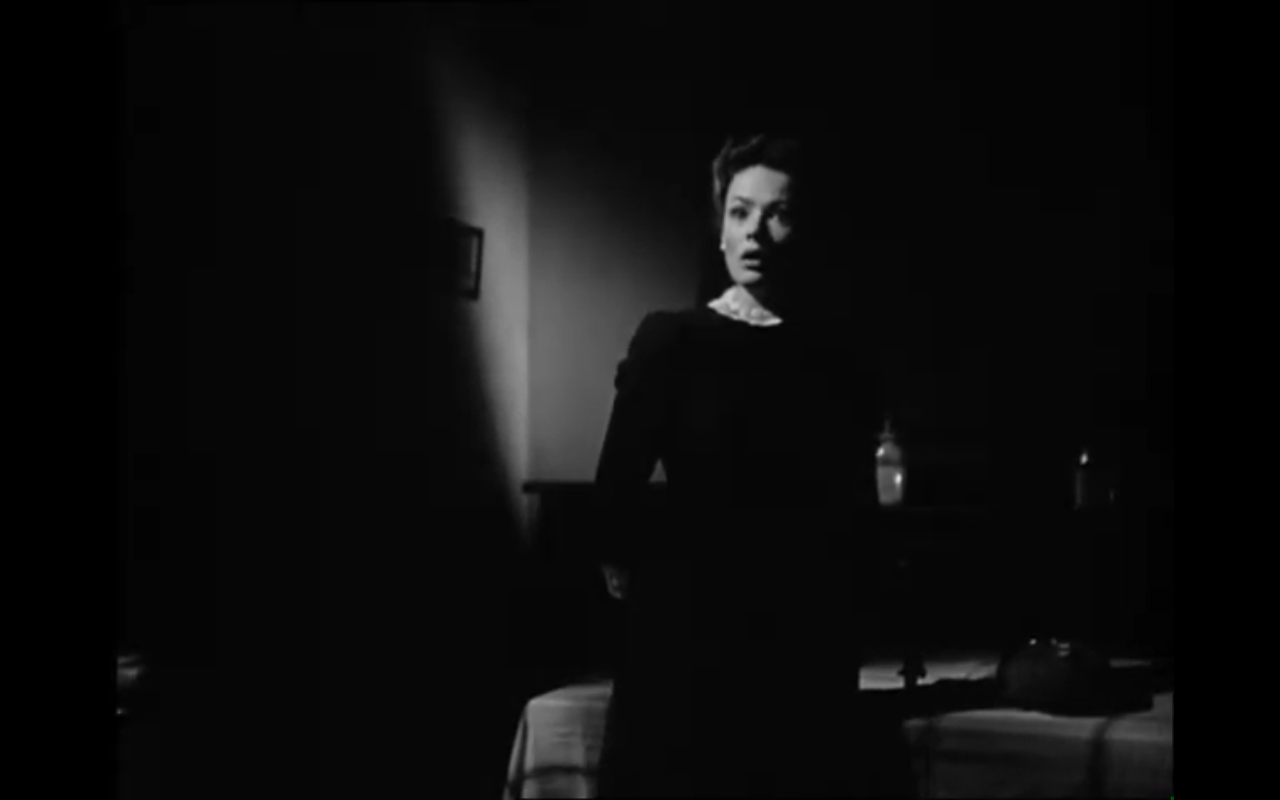 __
__
L’Aventura (Michelangelo Antonioni)
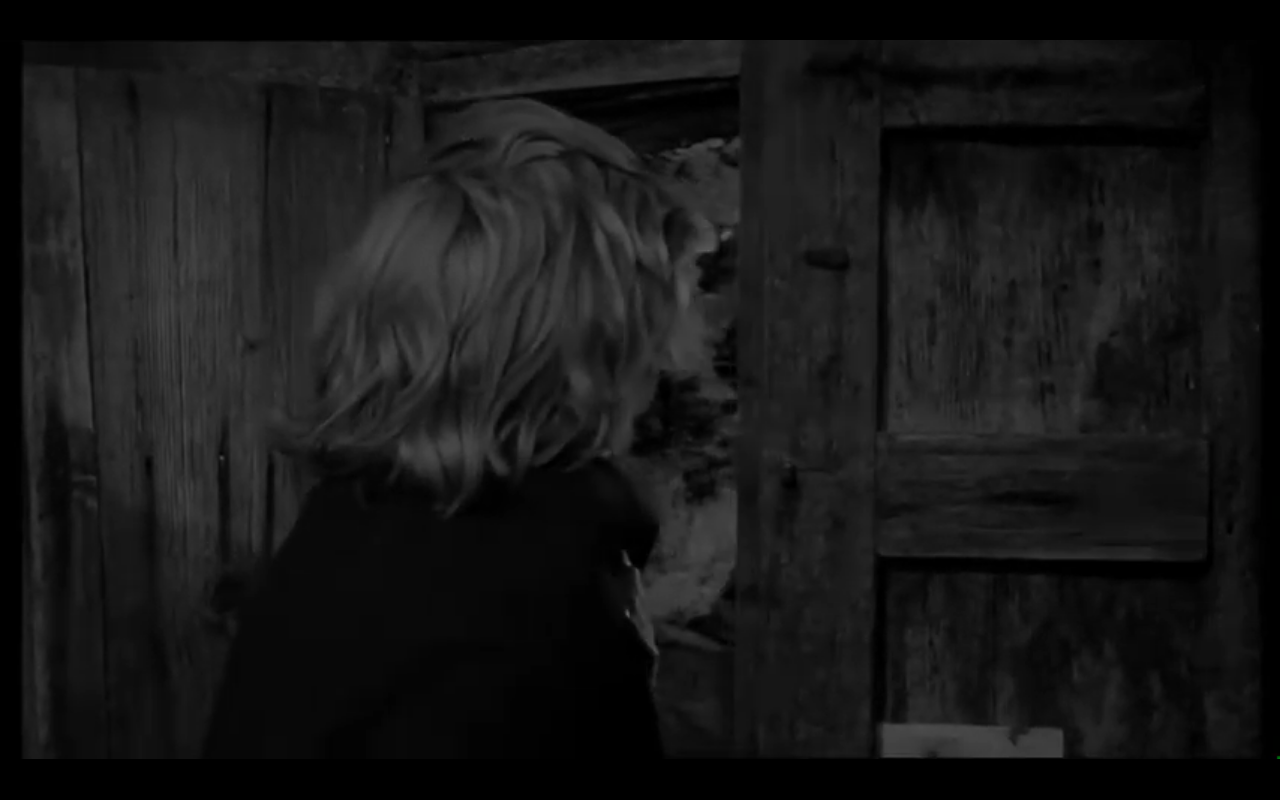 Foi muito surpreendente quando ela abriu a janela e se viu o mar, porque o exterior é idílico e contrasta muito com o interior em que o ambiente é pesado.
Foi muito surpreendente quando ela abriu a janela e se viu o mar, porque o exterior é idílico e contrasta muito com o interior em que o ambiente é pesado.
Ela abre a janela, fica por instantes a olhar para o horizonte e depois sai e no lugar dela ficamos nós a olhar (como acontecia no primeiro excerto que vimos). Esta cena transmite uma sensação de tranquilidade e beleza e também de solidão.
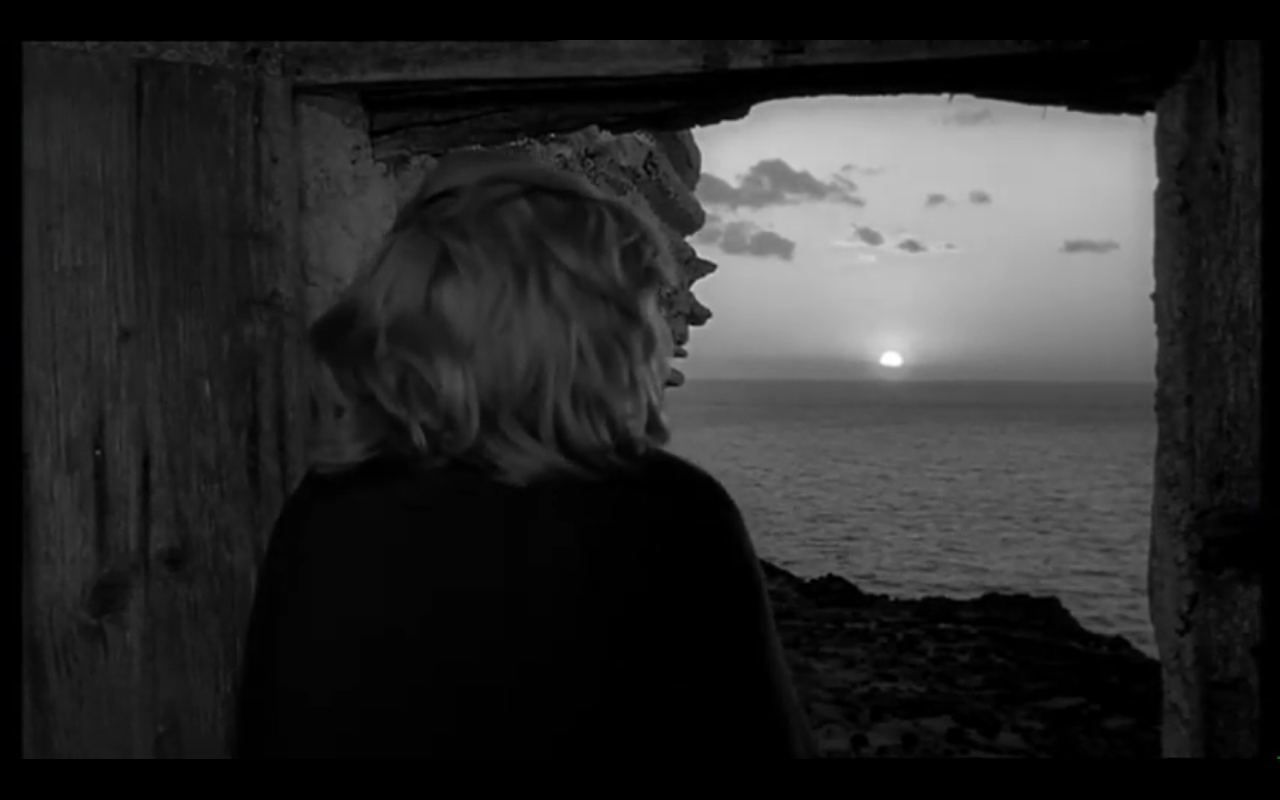 It was very surprising when she opened the window and saw the sea, because the outside is idyllic and contrasts a lot with the interior where the atmosphere is heavy.
It was very surprising when she opened the window and saw the sea, because the outside is idyllic and contrasts a lot with the interior where the atmosphere is heavy.
She opens the window, stares for a moment at the horizon and then leaves and in its place we stare at it (as in the first excerpt we saw). This scene conveys a sense of tranquility and beauty and also of loneliness.
 __
__
Cidade Branca (Alain Tanner)
Desta vez a câmara não está de frente para a janela e nós não vemos o que se vê da janela. Mas ouvimos: carros, uma sirene de um barco. São sons de coisas em movimento, e vemos a cortina em movimento, mas o som tem a ver com uma aceleração enquanto o que vemos é tranquilo. Ficamos a ver a dança das cortinas.
This time the camera is not facing the window and we do not see what we see from the window. But we heard: cars, a siren from a boat. It’s sounds of moving things, and you see the curtain moving, but the sound has to do with an acceleration while what you see is quiet. We’ll watch the curtain dance.
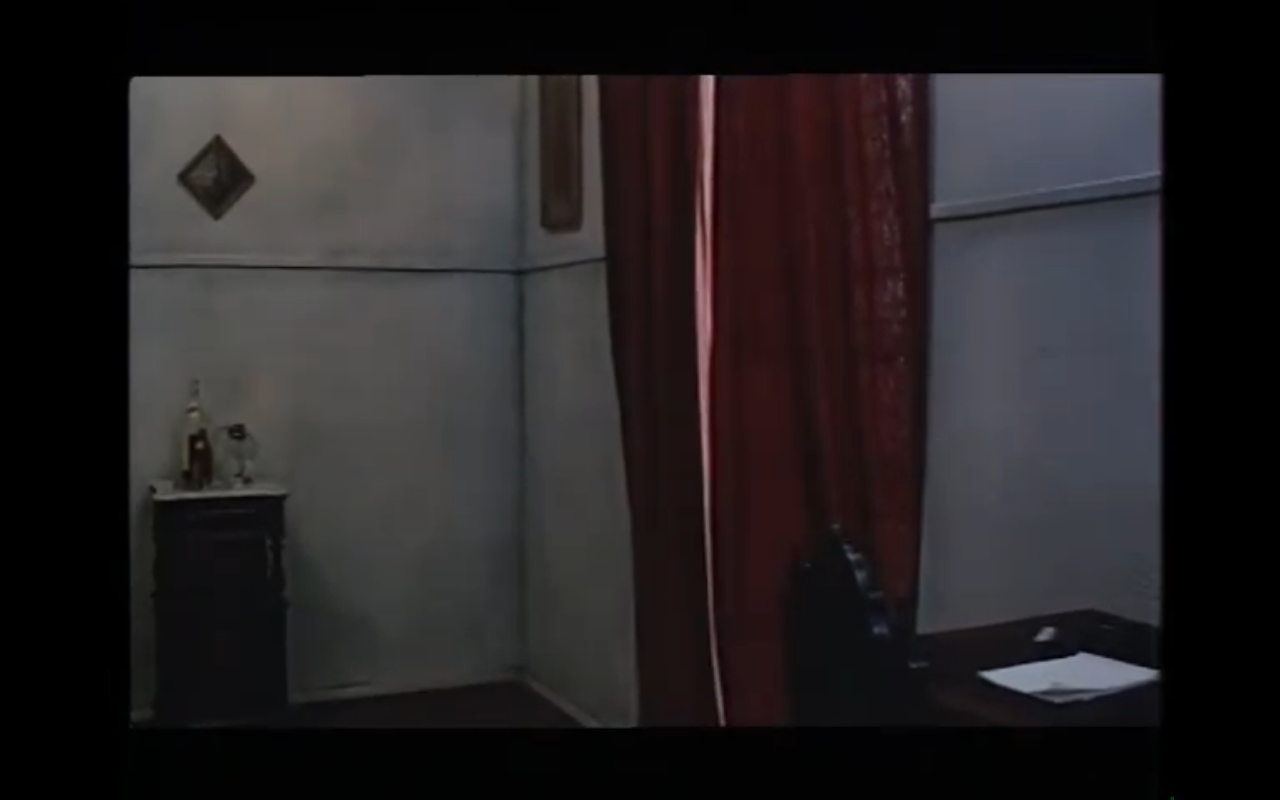
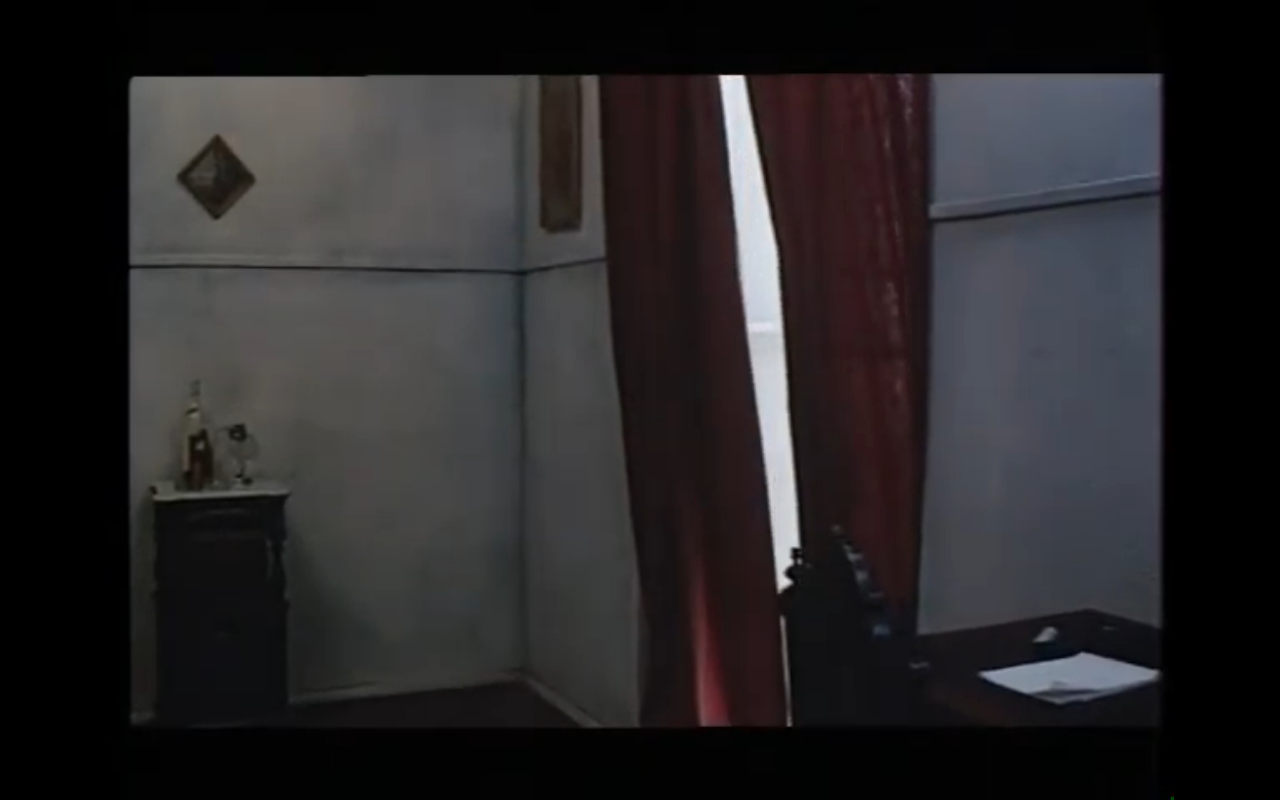

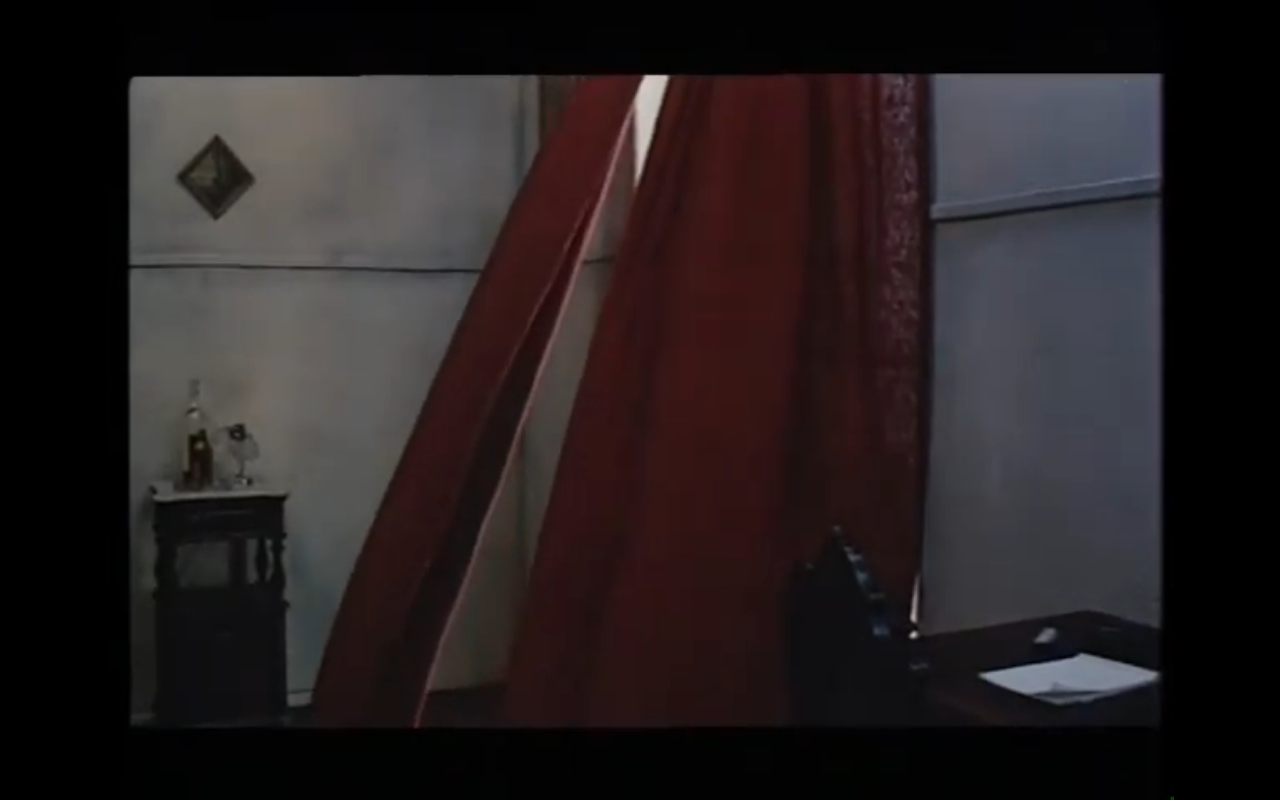

 desvanece-se, passamos a ver a janela e as nuvens reflectidas. Ele está do lado de fora. O olhar do senhor é nostálgico, um pouco triste, percebe-se que ele sente falta daquilo que está a ver. Eu acho que o que ele estava a ver é uma memória: dá a sensação que está a ver uma coisa que já se passou.
desvanece-se, passamos a ver a janela e as nuvens reflectidas. Ele está do lado de fora. O olhar do senhor é nostálgico, um pouco triste, percebe-se que ele sente falta daquilo que está a ver. Eu acho que o que ele estava a ver é uma memória: dá a sensação que está a ver uma coisa que já se passou.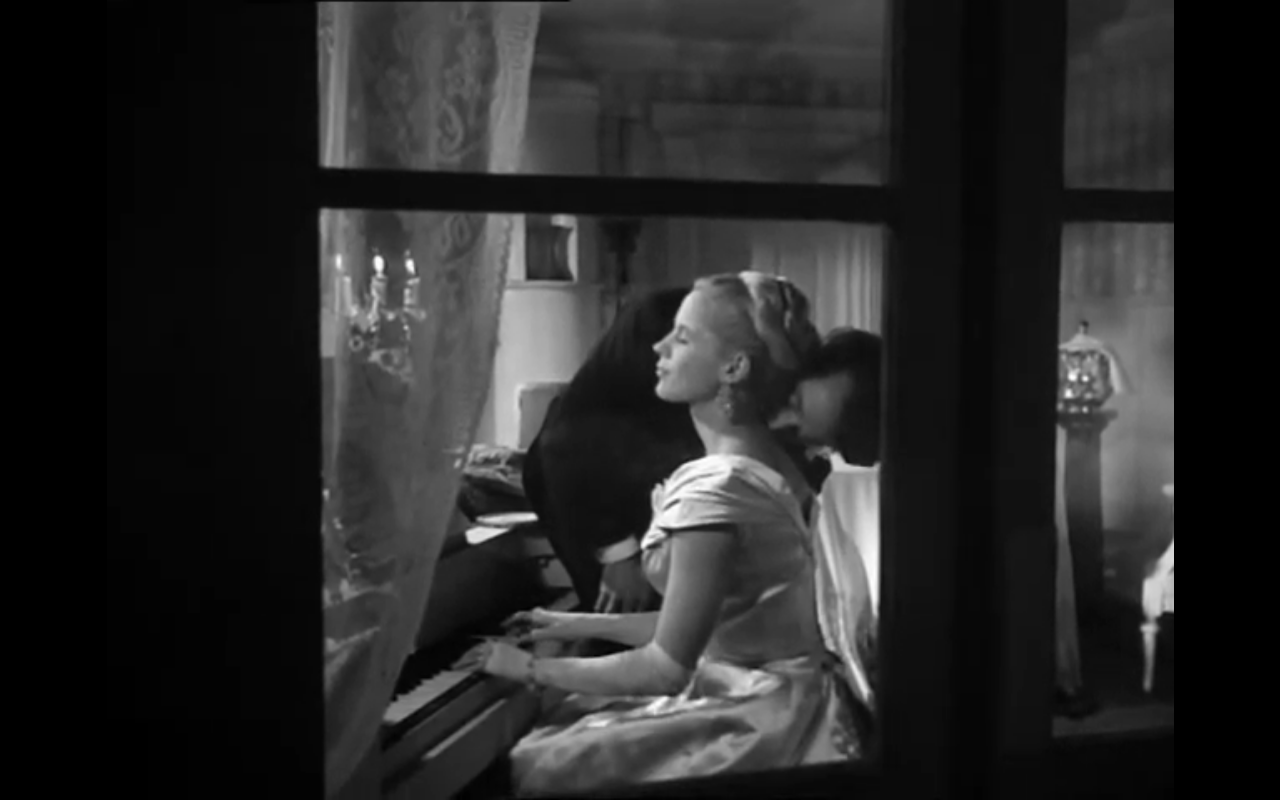
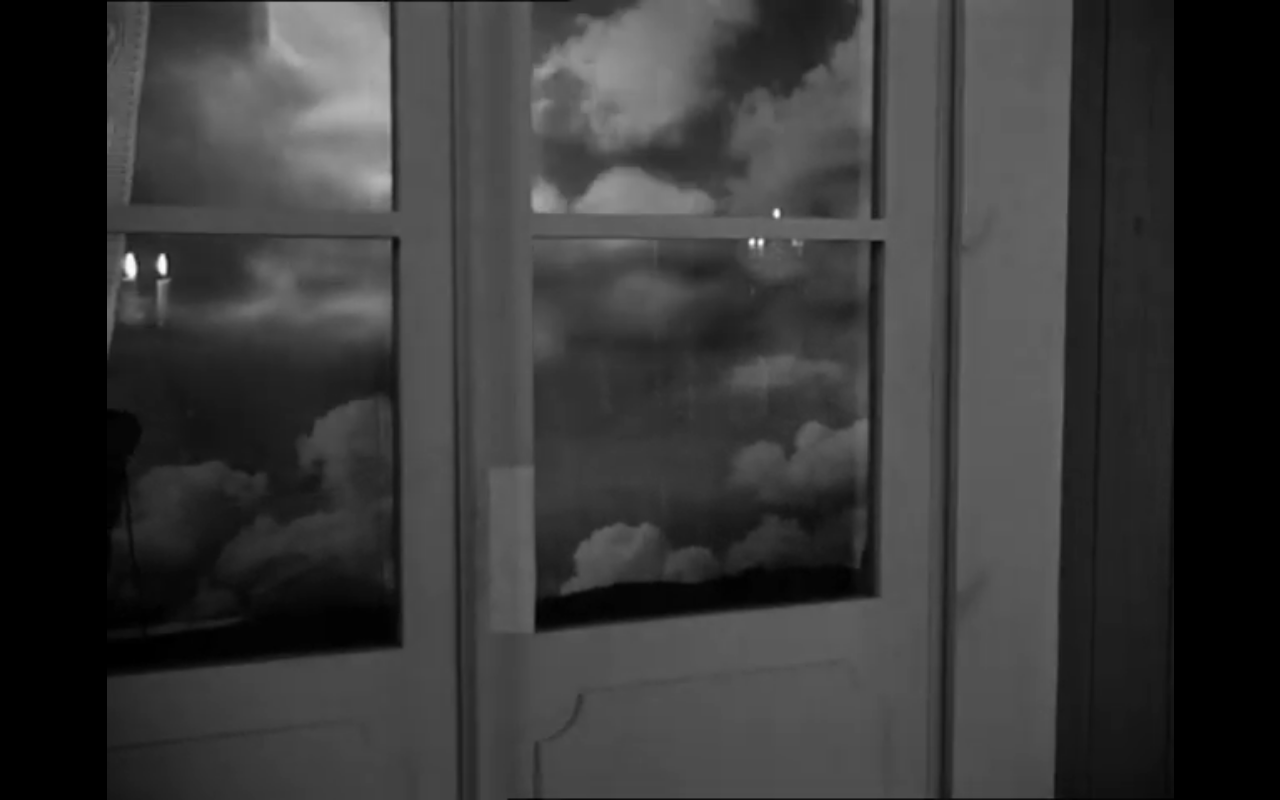
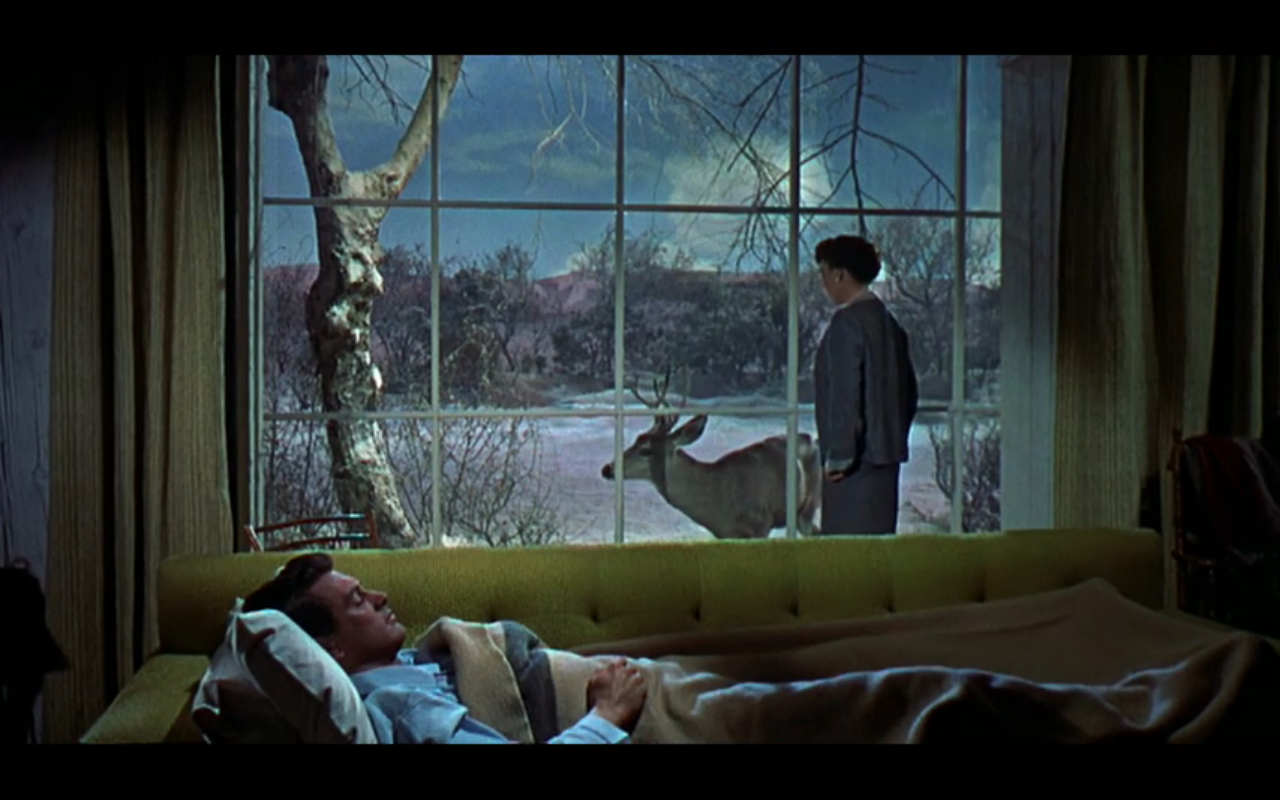
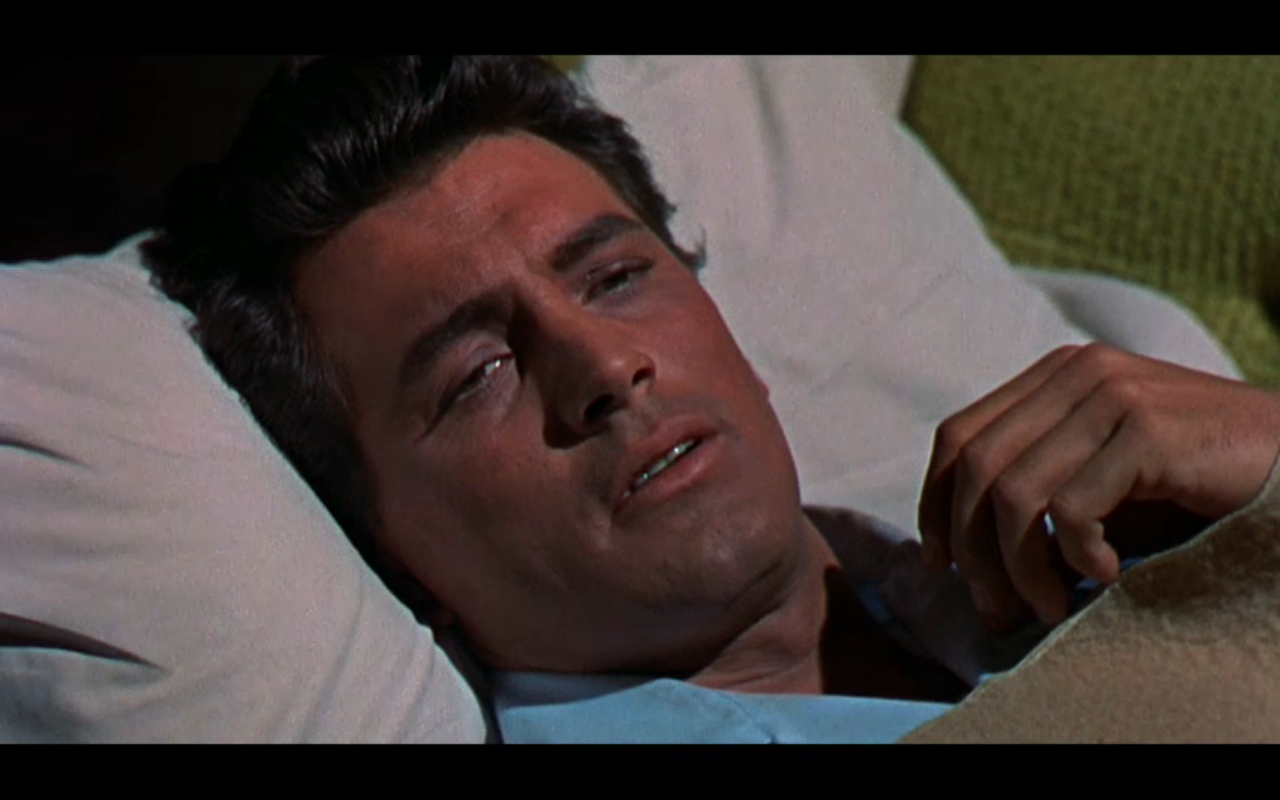 ing at the deer, and is not suprised, as if she were waiting to see him. The deer is an element of the situation. But a deer is a wild animal, if it were a cat, or another domestic animal, I would say he came home, but here it is as if the deer were witness to that story and now that it is all right he can go away (that is the last shot of the film).
ing at the deer, and is not suprised, as if she were waiting to see him. The deer is an element of the situation. But a deer is a wild animal, if it were a cat, or another domestic animal, I would say he came home, but here it is as if the deer were witness to that story and now that it is all right he can go away (that is the last shot of the film).


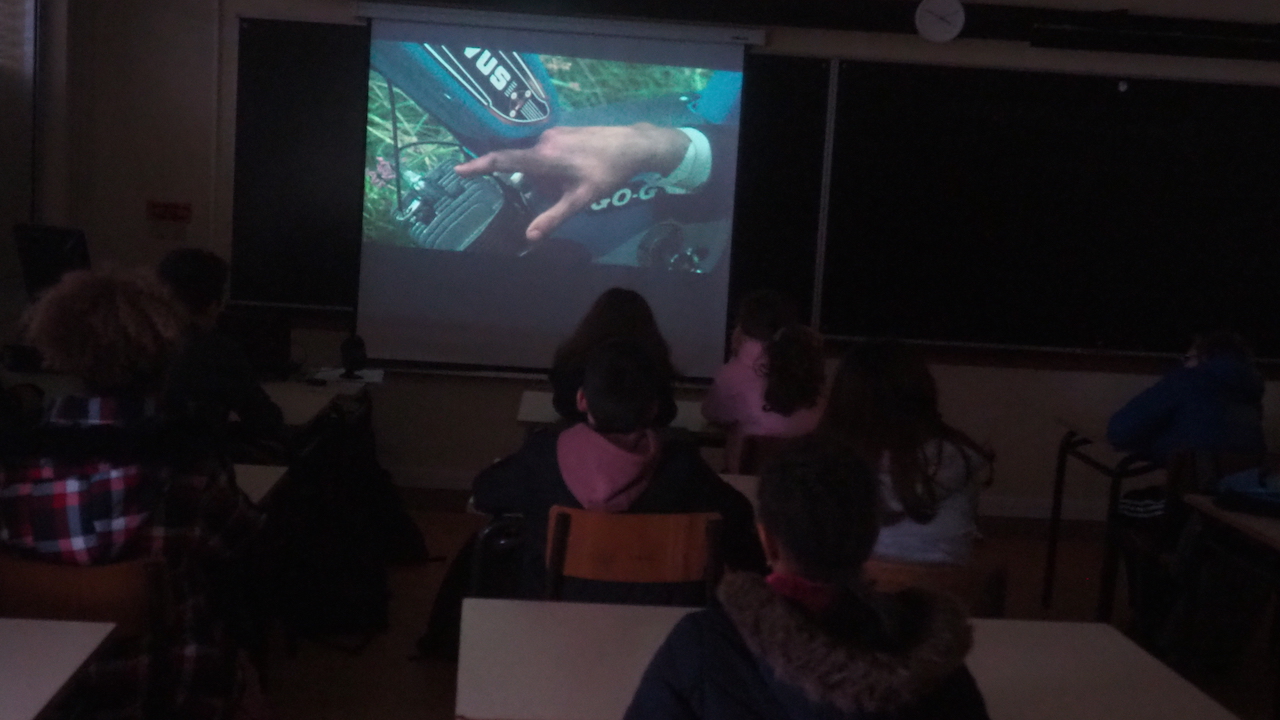




 – reforça essa sensação. Há um momento em que ele diz que “a casa é um navio” e nós vemos as janelas redondas e percebemos mesmo o que ele está a dizer. Esta ideia do navio é muito interessante, porque quando pensamos numa casa pensamos numa coisa imóvel, mas a verdade é que se pensarmos bem dentro de uma casa nós navegamos: navegam os nossos sentimentos, as nossas relações familiares, o nosso quotidiano, fazemos a viagem do nosso crescimento.
– reforça essa sensação. Há um momento em que ele diz que “a casa é um navio” e nós vemos as janelas redondas e percebemos mesmo o que ele está a dizer. Esta ideia do navio é muito interessante, porque quando pensamos numa casa pensamos numa coisa imóvel, mas a verdade é que se pensarmos bem dentro de uma casa nós navegamos: navegam os nossos sentimentos, as nossas relações familiares, o nosso quotidiano, fazemos a viagem do nosso crescimento. filming – reinforces that feeling. There’s a moment when he says « the house is a ship » and we see the round windows and we really understand what he’s saying. This idea of the ship is very interesting, because when we think of a house we think of something immobile, but the truth is that if we think well inside a house we sail: our feelings sail, our family relations, our daily lives, we make the journey of our growth.
filming – reinforces that feeling. There’s a moment when he says « the house is a ship » and we see the round windows and we really understand what he’s saying. This idea of the ship is very interesting, because when we think of a house we think of something immobile, but the truth is that if we think well inside a house we sail: our feelings sail, our family relations, our daily lives, we make the journey of our growth.






 __
__ Foi muito surpreendente quando ela abriu a janela e se viu o mar, porque o exterior é idílico e contrasta muito com o interior em que o ambiente é pesado.
Foi muito surpreendente quando ela abriu a janela e se viu o mar, porque o exterior é idílico e contrasta muito com o interior em que o ambiente é pesado. It was very surprising when she opened the window and saw the sea, because the outside is idyllic and contrasts a lot with the interior where the atmosphere is heavy.
It was very surprising when she opened the window and saw the sea, because the outside is idyllic and contrasts a lot with the interior where the atmosphere is heavy. __
__





